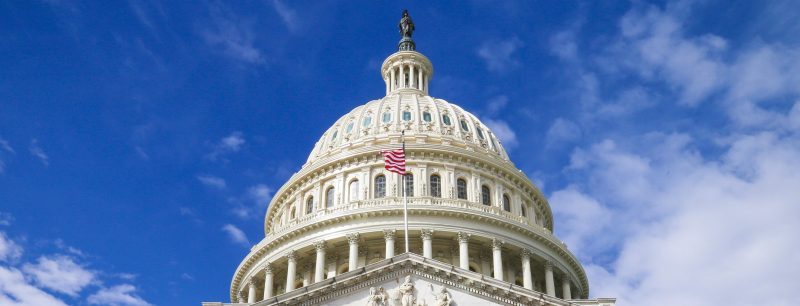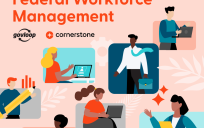The federal government remains partially shut down in a situation that shows few signs of ending. With the shutdown nearing its third week, what will happen to the federal employees who won’t be paid until the government reopens?
Roughly 800,000 federal employees are expected to be furloughed or working without pay while the shutdown exists. A furlough is a temporary leave of absence without pay due to special circumstances.
With the shutdown’s future remaining uncertain, many people are in the dark about when they’ll receive their next federal paycheck. Here are some tips for navigating the confusion:
Banks Can Give a Boost, But Read the Fine Print
Several major banks are offering aid to their customers impacted by the shutdown, according to CNBC.
Wells Fargo, for example, said that its credit, loan and mortgage consumers may qualify for forbearance or other payment assistance programs. The company will also weigh reversing overdraft fees for customers whose income has been interrupted by the shutdown.
Spokesman Tom Goyda added that what Wells Fargo customers qualify for depends upon their individual circumstances.
Bank of America, meanwhile, is also offering potential fee waivers, loan modifications and other assistance depending on each customer’s situation. “Our Client Assistance Program is available and designed to help clients experiencing financial hardship,” Spokesman Lawrence Grayson said.
Citi has additionally pledged to aid clients struggling because of the shutdown, which is rippling across about 25 percent of the federal government.
Credit Unions Can Also Lend a Hand
Multiple credit unions across America are also stepping up for federal employees amid the shutdown, CNN reported on Jan. 2.
For example, Lending Director Antoine McStay said that Democracy Federal Credit Union is offering short-term emergency loans with 0 percent interest. He added that bankers are also pointing customers with specific worries to their in-house financial services.
Other institutions – including USAA Bank and Transportation Federal Credit Union – have pledged to make low-interest loans available to their customers.
Federal employees examining such options, however, should make sure they’re aware of the interest, restrictions and terms involved with any loan before agreeing to take one.
Also Available: Fed Assistance Programs
If banks or credit unions aren’t an option during this shutdown, the Office of Personnel Management (OPM) has a potential alternative.
The Unemployment Compensation for Federal Employees (UCFE) lets federal employees file for unemployment benefits during shutdowns. State unemployment insurance (UI) agencies administer the UCFE by acting as agents of the federal government.
Generally, state law determines what benefits are available for applicants. To apply, employees must state where their official duty station in federal civilian service is located. The laws of the state that the station exists in apply to whatever benefits a person is eligible for there under the circumstances.
Federal employees can apply for UCFE benefits on or after the first day that they’re furloughed. OPM says that in general, most states issue payments to eligible individuals within 14 to 21 days of their claim getting filed.
OPM also notes that most states pay a maximum of 26 weeks in regular benefits. This amount varies, however, as the actual total depends on state law.
Unfortunately, this approach presents unique challenges. For example, many states have laws mandating that federal employees repay any UI benefits they receive after getting retroactive pay from a shutdown.
In some states, federal employees may even be required to repay their benefits all at once or have their wages garnished to make up the difference.
Other states do not allow federal employees to cancel their UI claims once they have begun receiving them even if a shutdown ends.
Another possibility is the Federal Employee Education and Assistance (FEEA) fund. FEEA is an independent nonprofit which provides emergency financial assistance and scholarships to federal workers and their families.
FEEA said on Jan. 3 that its hardship loan program is open to furloughed federal employees, but there are specific qualifying requirements. Emergencies during the shutdown that would qualify federal employees for such loans include losing a home due to fire, a death in the family or serious illness for the worker or their family. A complete list of eligible hardships – and the loan application – is available here. This aid is additionally available while the government is open to federal employees suffering from the effects of a qualifying emergency.
“Unfortunately, there are many federal employees who are living paycheck to paycheck,” Robyn Kehoe, FEEA’s Deputy Director, told GovLoop on Jan. 4. “Our goal is to catch people before they fall into that cycle of debt.”
Kehoe said that there are no fees or interest on FEEA’s hardship loans. According to the program’s website, expenses that the loan is eligible for include rent or mortgage payments, home utilities like gas or electric use and funeral expenses.
Individuals that are eligible for the loan must have been full or part-time permanent federal civilian or postal employees with the federal government for more than one year. The loans have a $1,2000 ceiling.
A final option for federal employees dealing with this shutdown is to proactively speak with their creditors. This raises the possibility of eliminating penalties for late payments, deferring payment due dates or finding an alternative to payments that pleases everyone involved.
Regardless of what help you seek during this shutdown, researching your options is important for finding the best outcome for you and your loved ones.
How We Got Here
Shutdowns happen when Congress fails to fund all or part of the government when appropriations for doing so dry up. The issue at the heart of this shutdown is a stalemate between Democrats and Republicans over border security.
President Trump is demanding $5 billion in funding for a wall dividing the U.S. and Mexico, a longstanding promise of his that’s popular with Republicans. Trump argues that the controversial barrier would stop incoming drugs, human trafficking and illegal immigration.
Democrats, however, are voicing skepticism of the wall’s ability to prevent those problems. With neither side budging late last year, the standoff led to a partial government shutdown. The shutdown began Dec. 22, 2018, with major agencies including the Agriculture, Commerce and Interior departments immediately feeling the sting.
Unfortunately, finding a solution to the shutdown might prove difficult with Congress divided between two parties. Republicans control the Senate, where Majority Leader Mitch McConnell (R-Ky.) has vowed not to consider any legislation that would dissatisfy Trump – a fellow GOP member.
Democrats, however, took over the House on Jan. 3 with new Speaker Nancy Pelosi (D-Calif.) vowing not to fund Trump’s wall. With neither camp giving up an inch, federal employees might remain unclear about the state of their paychecks for the foreseeable future.
You can find all of GovLoop’s shutdown coverage here.





Leave a Reply
You must be logged in to post a comment.